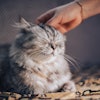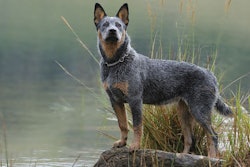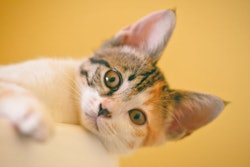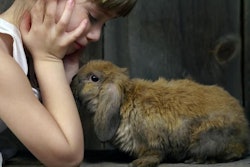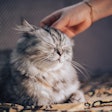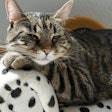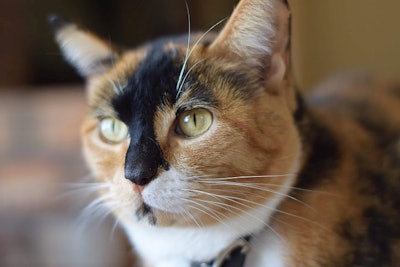
My cat is made in the U.S.A., homegrown in my own backyard. However, biologically, she’s an import and that has implications for native wildlife. For those cat owners who let their felines roam the neighborhood, high-protein cat food may be one means to reduce predatory pressure on birds and other small wildlife.
Tigra origin story
A mother cat birthed a litter under our shed. I waited until they were weaned and caught one of the kittens. She became Tigra, pronounced not like the near-forgotten Avenger, but like Spanish for female tiger. Tigra never spent another day outside.
In my eyes, the kitten was now family. In Missouri’s ecosystem, though, she was an invasive species, like Burmese pythons in Florida, though cuddlier. Along with their feral cousins, pet cats allowed outdoors devour a range of wildlife. This prey can include threatened native animals, a particular problem in Australia and other areas populated by endemic animals. Pet food companies may have an opportunity to help with conservation while marketing high protein cat diets.
Cat predation on wildlife and what to do about it
A literature review in Animals examined research on predation by domestic cats, along with other costs and benefits of allowing pet cats to roam outside their houses. Along with the ecological effects of an invasive predator, cats themselves may face greater risk of disease and parasites. Similarly, outdoor cats face higher chances of traffic injury and death. The outdoor pet cat may become prey itself or eat poison meant for other animals. At the most basic level, outdoor cats are more likely to be lost.
For those cat owners who decide to let their cats roam, a study in Current Biology identified ways to reduce their pets’ predation on birds and other wildlife. A team of University of Exeter scientists recruited 219 households in southwest England, with a total of 355 cats. For 12 weeks, outdoor cat owners tried one of five methods to reduce predation on wild birds and small mammals. In one group, the cats were fitted with bells. In another, the cats ate a premium grain-free, high-meat cat food. In a third, cats received their conventional kibble in a puzzle toy that required them to knock the pieces out. Cats in a fourth group wore a commercially available, rainbow-colored, ruffled collar meant to startle birds. Cat owners played with their pets for a minimum of five minutes per day in a fifth group. Compared to a control group, cats killed fewer wild animals in the groups that ate high-protein diets and that played with their owners. Those two groups of cats also brought down less prey than before the experiment began. Cats in the puzzle group increased predation.
With evidence that certain diets may reduce predation, cat food marketers may find another aspect of their product to tout. Pet owners tend to be animal lovers in general, so outdoor cats’ effects on the environment may be a cause of cognitive dissonance for cat owners. For those who let their cats outdoors, feeding high protein diets may offer a means to reduce their pets’ predation on wild animals.



